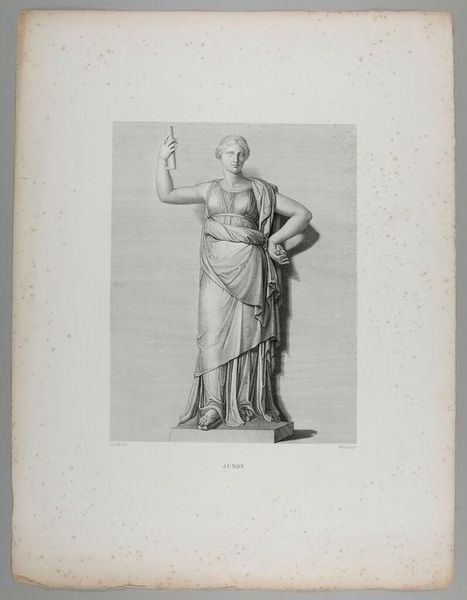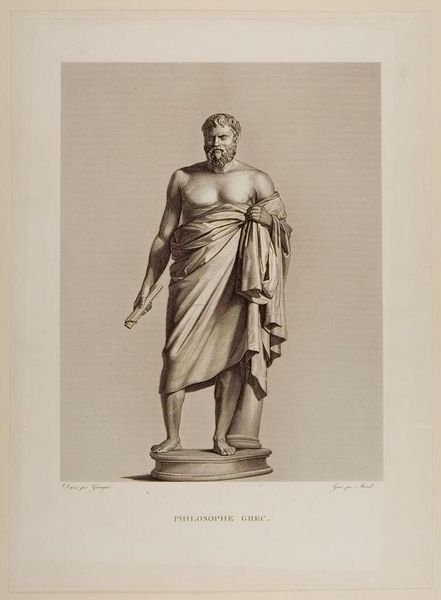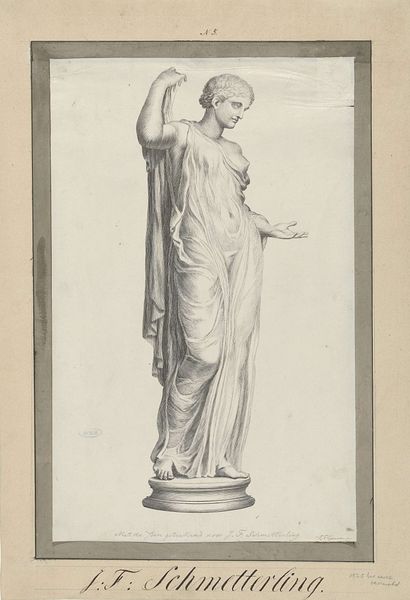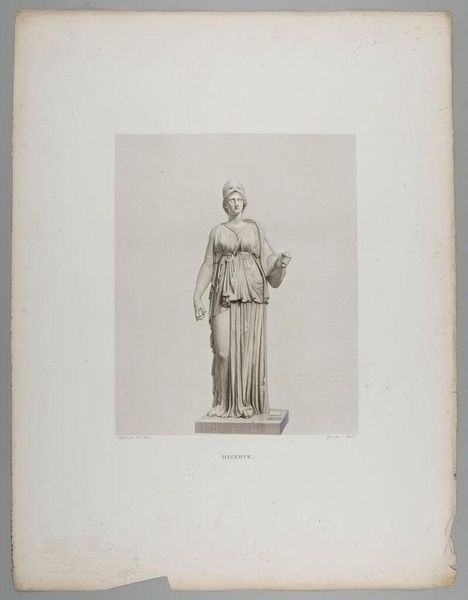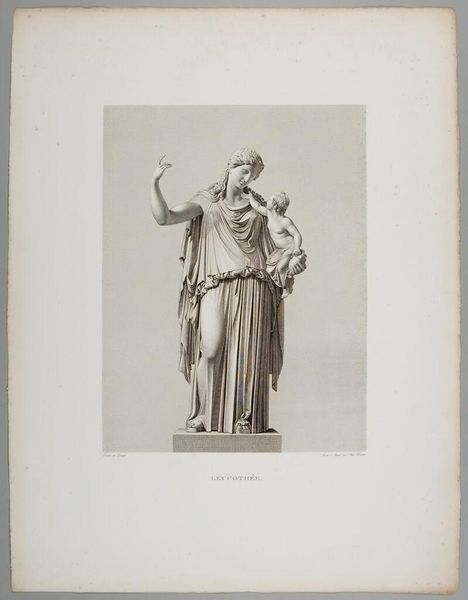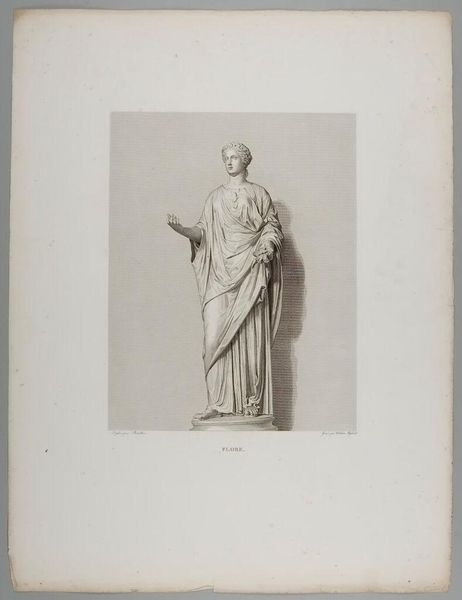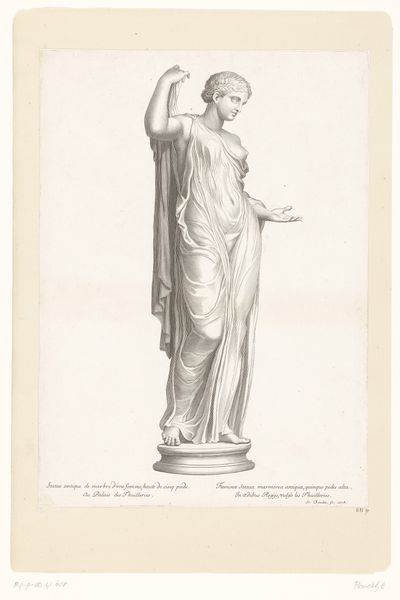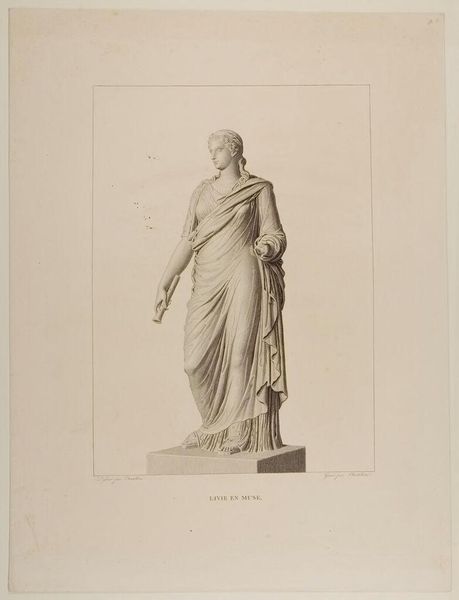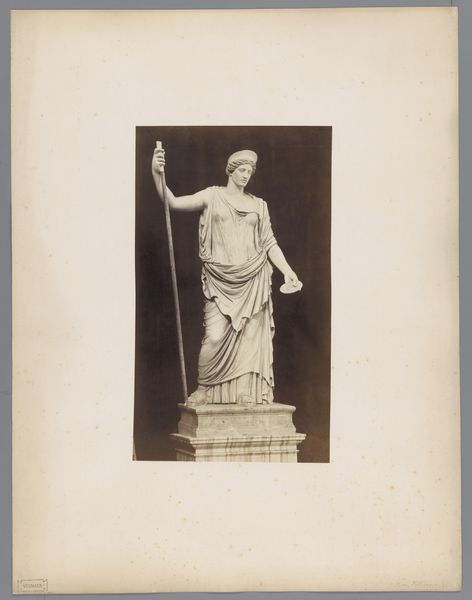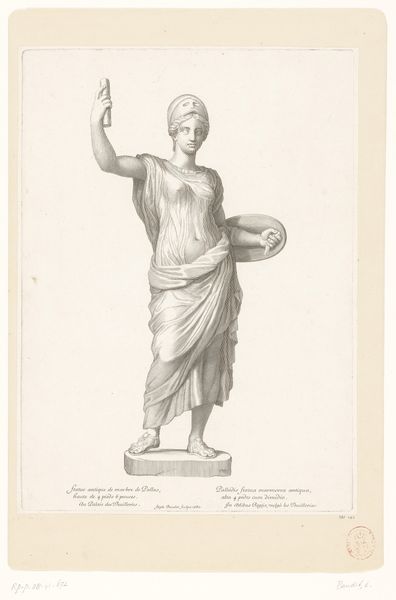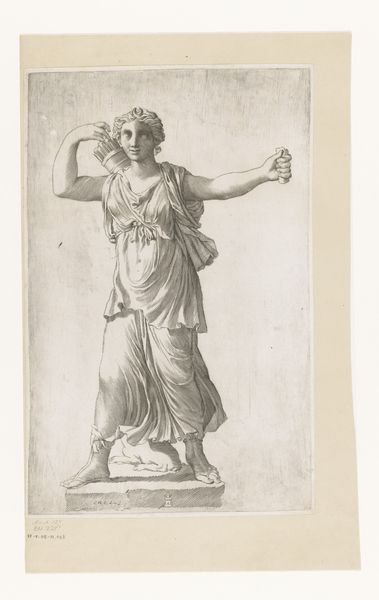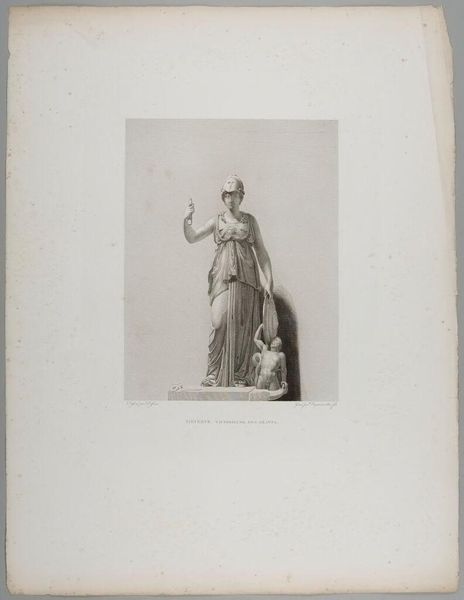
Minerva, after the Antique c. 19th century
Copyright: CC0 1.0
Curator: This is Étienne Frédéric Lignon's "Minerva, after the Antique," housed here at the Harvard Art Museums. The piece offers an interpretation of classical sculpture. Editor: Immediately, I see a figure of restrained power, almost a study in contradictions with the delicate drapery against the resolute stance. What draws you in? Curator: Absolutely, that controlled tension. Minerva, or Athena, carries so much symbolic weight—wisdom, strategic warfare, and craftsmanship. The lifted hand is fascinating, and the helmet too. Editor: I see it as a challenge to patriarchal structures. Classical art often deified masculine strength, so it's compelling how Lignon visualizes Minerva as an autonomous figure. Curator: Yes, and it carries echoes through time. We see in later works and figures a similar kind of strength and resolve. Editor: Agreed, and in our current context, her image serves as a reminder of the intellectual and creative possibilities of feminine power. Curator: A powerful legacy, indeed. Editor: A legacy we must continue to unpack and challenge.
Comments
No comments
Be the first to comment and join the conversation on the ultimate creative platform.
